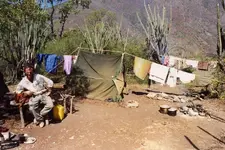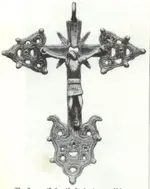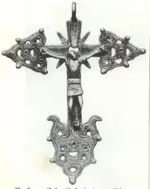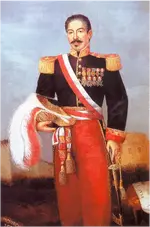Hello Johnnyi
There is some thing untamed about Bolivia with its wild and woolly windswept mountains, Altiplano and deep rain forested valleys and gorges of the Yungas valley. Bolivia in all its backward and some times dysfunctional existence has a charm all on its own. Some times you can feel a million miles from nowhere and even in another century.
One has not lived until you have trekked the wide open spaces of Bolivia, felt its three climates in one day and have traveled the roads of death, which are many. The Stremnaya road cut into a face of a cliff was one such the road that took my breath away. I was there much later in the mid 90's, I can only guess what the place was like in the 60's?
The incessant barking of dogs and the toilets of death are still there is some places.

As well as the same but different ancient Inca laddies like a character out of a Hansel and Gretal story hawking whatever they can sell, bags of Cocos leaves or dried llama embryos for good luck charms. There was always one sleeping and living on each street corner with a pile of grandchildren. It makes you appreciate what we have in which we take so much for granted.
I am not sure with Lulu's but in Bolivia one is always meeting interesting people from all corners of the world. One thing I recommend, never go drinking with a Bolivian unless you want to pass out. These guys drink rocket fuel.

My journey through Bolivia was from the land border near lake Titicaca as I was Living in Cusco Peru for a time. It is when you have been South America for a while with no problems you begin to feel little more adventurous. My trip to Plazula was a little more than a half arsed spur of the moment expedition that had intended only see the site for myself. It was at the time possibly connected to another project I was researching. However I never made it there as I got sick with Salmonella poisoning. As you can imagine no fun in exploring when you are floating in and out of your body.

Two explorers Mark Howell and Tony Morrison in the Mid 60's made a brief visit. They climbed a hill they believed to be Caballo Cuno which was only 400ft high. There is some doubts to weather this was the right hill because it was alleged that the hill was 800 ft high. They also found a copper plate. They searched a cave that allegedly had the skeletons of about 300 native workers in a hill known as Negro Muerto. It has been also alleged that they were shown an ancient beautifully inscribed document by a Bolivian friend of theirs.
It is interesting to note that some silver plate was allegedly discovered by Prodgers in one of the burial mounds close to the river. What ever the truth is, it appears some mining and smelting activity was going on there at one time.
Did you ever find the square stone heap?
regards Crow





 .
. As well as the same but different ancient Inca laddies like a character out of a Hansel and Gretal story hawking whatever they can sell, bags of Cocos leaves or dried llama embryos for good luck charms. There was always one sleeping and living on each street corner with a pile of grandchildren. It makes you appreciate what we have in which we take so much for granted.
As well as the same but different ancient Inca laddies like a character out of a Hansel and Gretal story hawking whatever they can sell, bags of Cocos leaves or dried llama embryos for good luck charms. There was always one sleeping and living on each street corner with a pile of grandchildren. It makes you appreciate what we have in which we take so much for granted.








